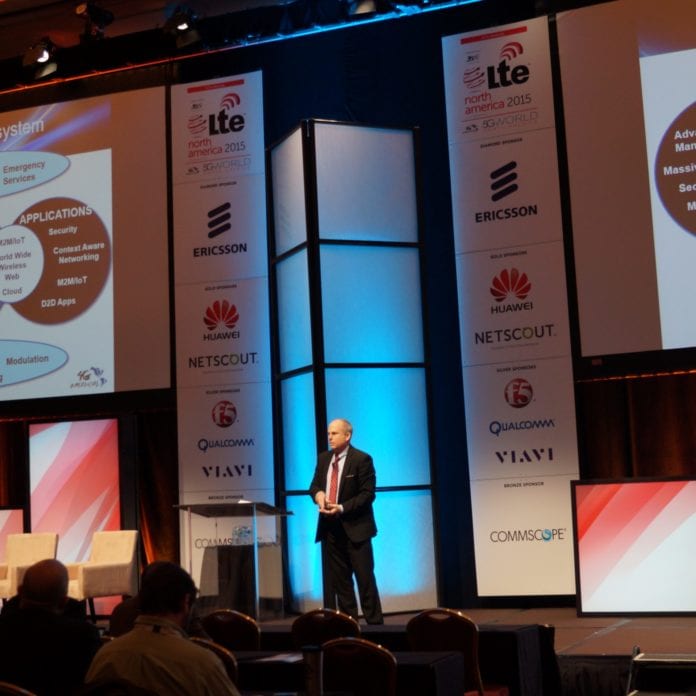LTENA 2015: LTE still reaching for global ubiquity
DALLAS – For as much as the wireless industry is abuzz over “5G,” a few things stood out in presentations at LTE North America: LTE is still a relatively young technology with a long life ahead of it, and as quickly as it has been adopted, it has quite a way to go before it has global ubiquity.
Chris Pearson, president of 4G Americas, presented numbers showing that nearly 1 billion LTE subscribers and around 460 LTE networks will have been established by the end of this year, with the number of subscribers expected to reach around 3.6 billion by the end of 2020. During the same year that 5G is expected to emerge in commercial deployments, LTE coverage is expected to reach about 70% of the world’s population.
Pearson noted that LTE still has a number of features that are emerging, which will improve efficiency and speed for existing use cases ranging from Voice over LTE to carrier aggregation to LTE Broadcast and the ability to leverage LTE in unlicensed spectrum.
The industry, he said, “does not have to wait for 5G for opportunity or to solve problems.”
While operators will explore 5G, Pearson said, they are also going to continue investing in LTE-Advanced and what 3GPP is calling “LTE-Advanced Pro,” which designates advanced features starting in Release 13, slated to be finalized in March of next year and will include features such as License-Assisted Access for LTE over unlicensed spectrum.
With 5G standards work to officially begin in 2016 through 3GPP, even defining the technology has been difficult at this point. Pearson said that he expects 5G to support three components: enhanced mobile broadband; massive “Internet of Things” deployments; and ultra-reliable and ultra-low-latency connectivity, even if that connectivity doesn’t always involve mobility.
One thing that seemed clear from the carrier participants is that as interesting as they may find 5G technology, they won’t move to 5G simply for 5G’s sake – and if they can use LTE for something, then they will.
Asked about which use cases might get early support, Brian Daly, director of core and government regulatory/standards at AT&T, said the carrier is already supporting similar use cases with current technology.
“We’re already doing all the use cases in LTE – it’s already happening,” Daly said. “I don’t think there’s a clear use case that will drive 5G; 5G will be driven by all of them. It’s really too early to say if one will be dominant or not.”
At the same time, however, operators are looking at an emphasis on software-defined network, network functions virtualization and IP-based services because they see this as a way to prepare their networks for yet another generational shift in technology. Mark McDiarmid, VP of radio network and engineering for T-Mobile US told the audience at a co-located 5G World session that bringing services into the IP domain (such as voice over LTE and video over LTE, for example) and other rich communications services offers a measure of future-proofing for those services, so that they can be transferred seamlessly if or when a new radio technology is introduced.

